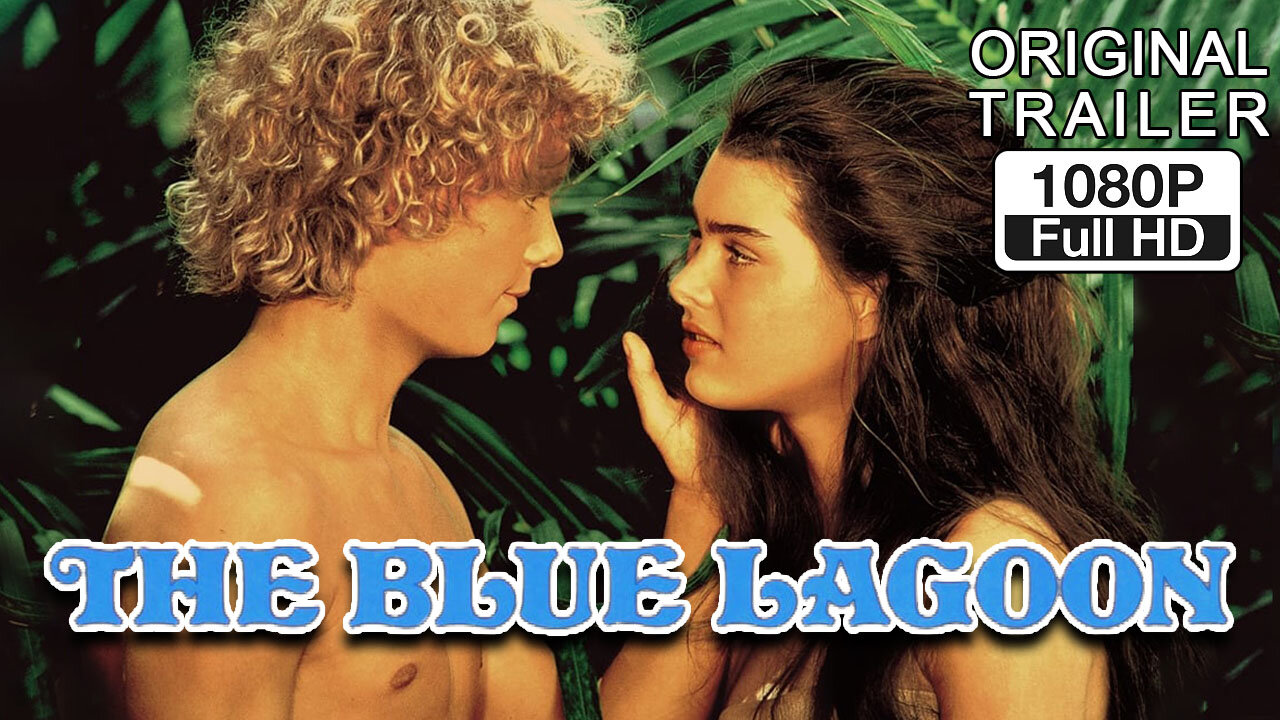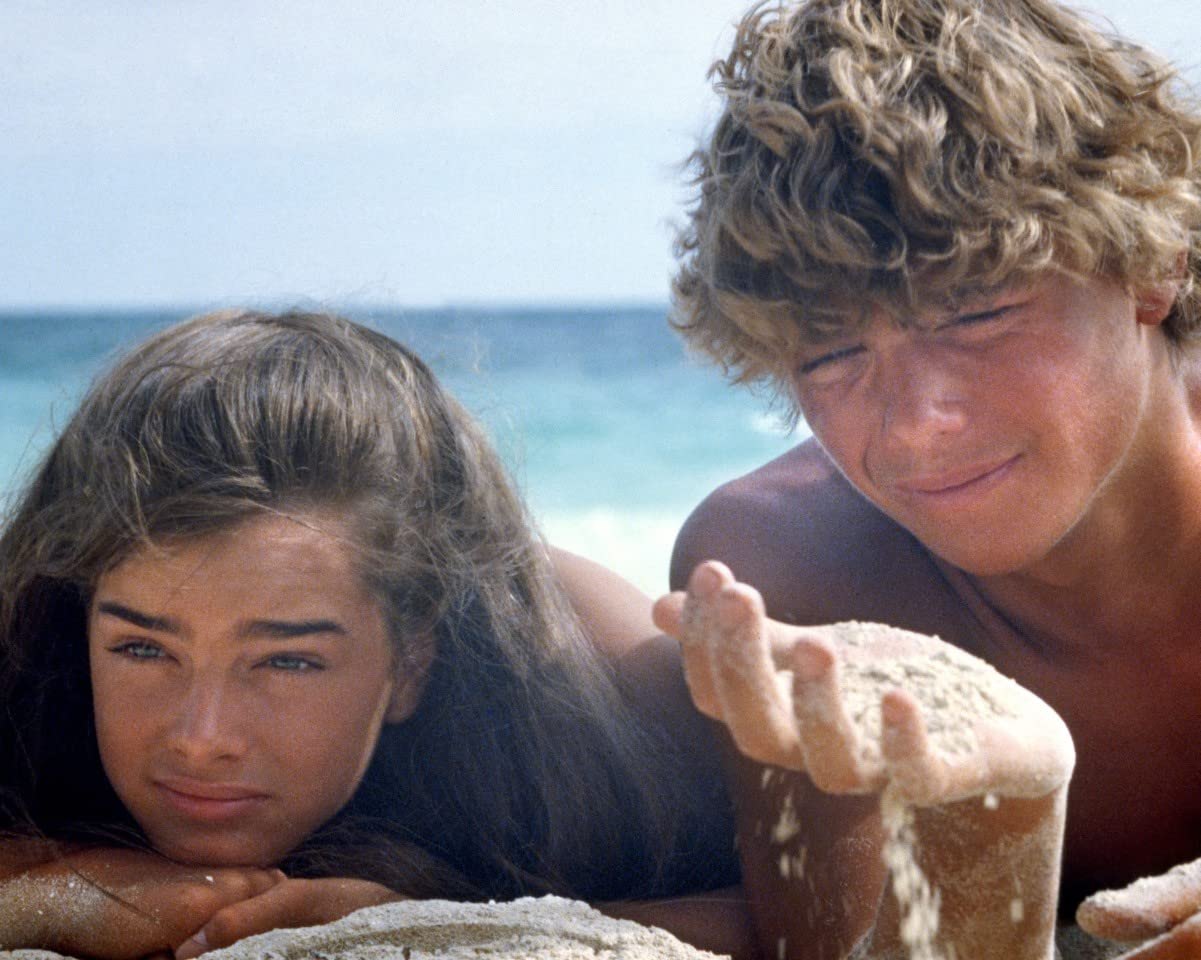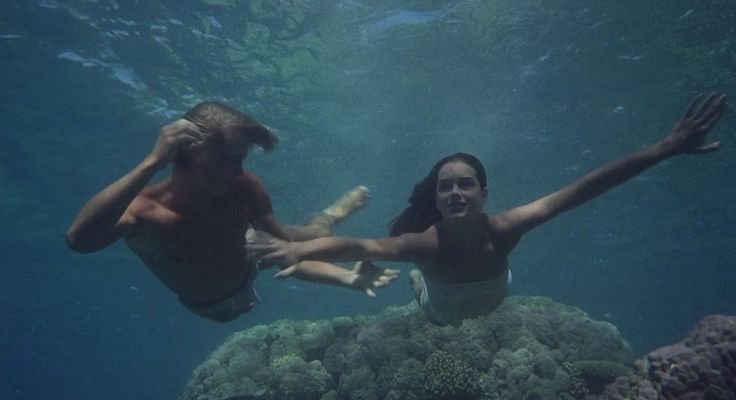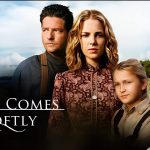The Blue Lagoon (1980)

The Blue Lagoon is a 1980 American romantic survival drama film directed by Randal Kleiser. Adapted from the 1908 novel by Henry De Vere Stacpoole, the film explores themes of love, innocence, and survival in an isolated paradise. The story follows two young characters, Emmeline and Richard, who are stranded on a deserted tropical island. With a screenplay by Douglas Day Stewart, the film stars Brooke Shields and Christopher Atkins. The Blue Lagoon is a poignant coming-of-age tale that remains an iconic film in the romance and survival genre.
The plot of The Blue Lagoon centers around two children, Emmeline (Brooke Shields) and Richard (Christopher Atkins), who are shipwrecked on a lush, remote island in the South Pacific. With no adults to guide them, they must learn to survive on their own. Over time, the two develop a close bond, transforming from innocent children to young adults exploring the complexities of love, sexuality, and human nature. Their idyllic world is both beautiful and dangerous, with the challenges of survival and their growing feelings for each other forming the central tension of the story.
As the two protagonists grow up on the island, their characters evolve in response to the environment and each other. Emmeline starts as a naive, sheltered young girl who learns to navigate the challenges of the island, while Richard matures from a curious boy into a protective young man. Their development is gradual, with their relationship growing from friendship into a romantic bond. The film highlights the innocence and purity of their connection, as they experience their first emotions of love and desire in an untouched paradise. Brooke Shields and Christopher Atkins deliver strong performances, capturing the innocence and complexity of their characters’ emotional journey.

One of the most striking features of The Blue Lagoon is its stunning cinematography. The film makes excellent use of its tropical island setting, with breathtaking views of crystal-clear waters, lush greenery, and golden beaches. The island itself becomes almost a character in the story, symbolizing both freedom and isolation. The natural beauty of the location contrasts with the harsh reality of survival, creating a sense of wonder and tension. The lush landscape serves as both a source of sustenance and a reminder of the characters’ isolation, enhancing the emotional depth of the film.

The Blue Lagoon explores several profound themes, such as the innocence of youth, the complexity of love, and the struggle for survival. The relationship between Emmeline and Richard is central to the narrative, with their growing emotional and physical bond serving as a metaphor for the journey from childhood to adulthood. The film also explores the impact of isolation, showing how the lack of social structures and adult guidance forces the characters to develop their own sense of morality and survival instincts. The theme of nature’s duality—beautiful yet dangerous—is prevalent throughout the film, as the island’s natural beauty hides the peril that exists in the wild.

In conclusion, The Blue Lagoon is a captivating film that blends romance, drama, and survival. It is a powerful exploration of love and human connection in an isolated environment. The performances of Brooke Shields and Christopher Atkins, paired with the stunning visuals of the island setting, make it an unforgettable film. Though it has been the subject of some controversy over its portrayal of young love, The Blue Lagoon remains a thought-provoking and visually captivating film that continues to resonate with audiences. It stands as a significant work in the coming-of-age genre, exploring the challenges of survival and the discovery of love in a beautiful yet unforgiving world.











